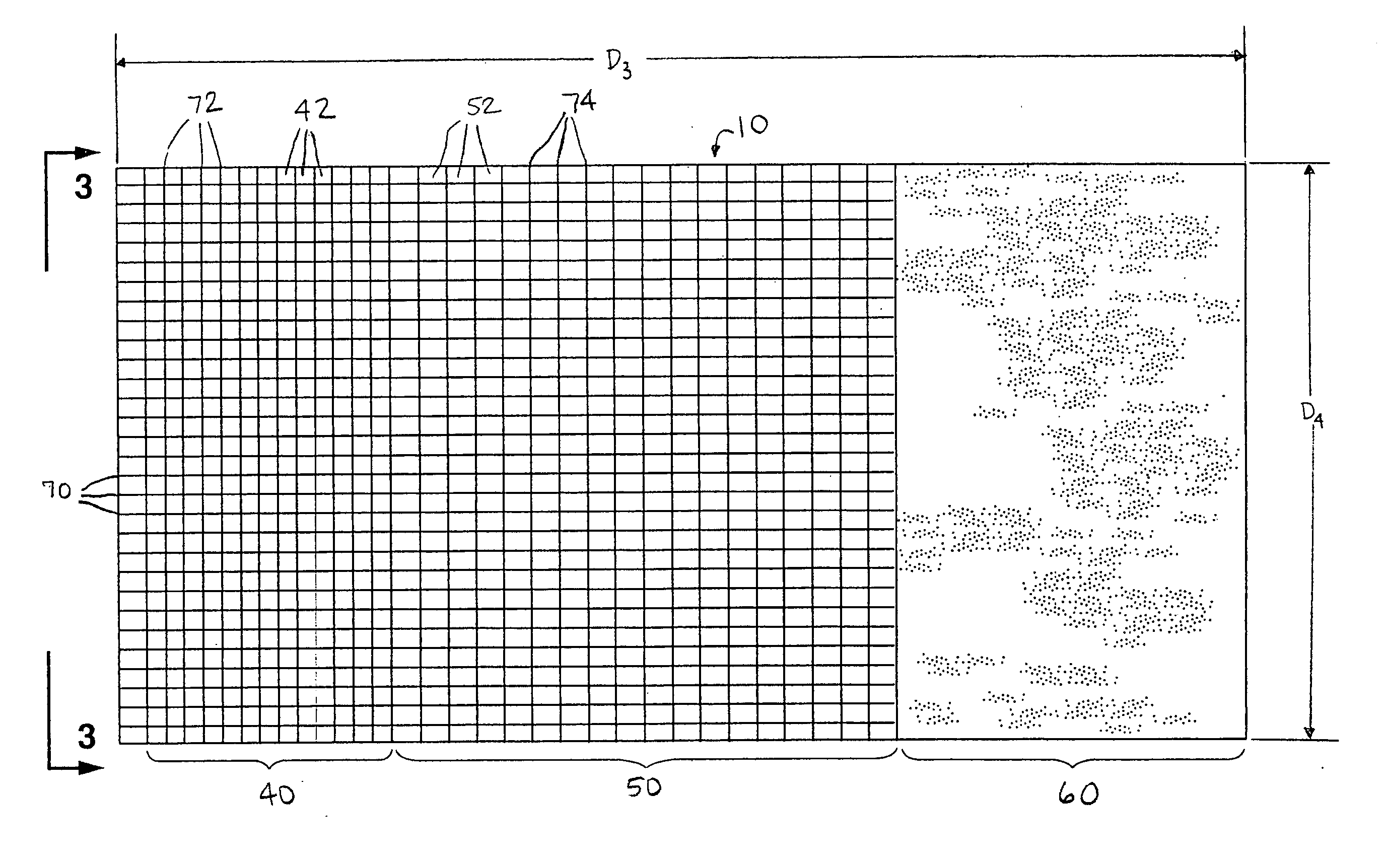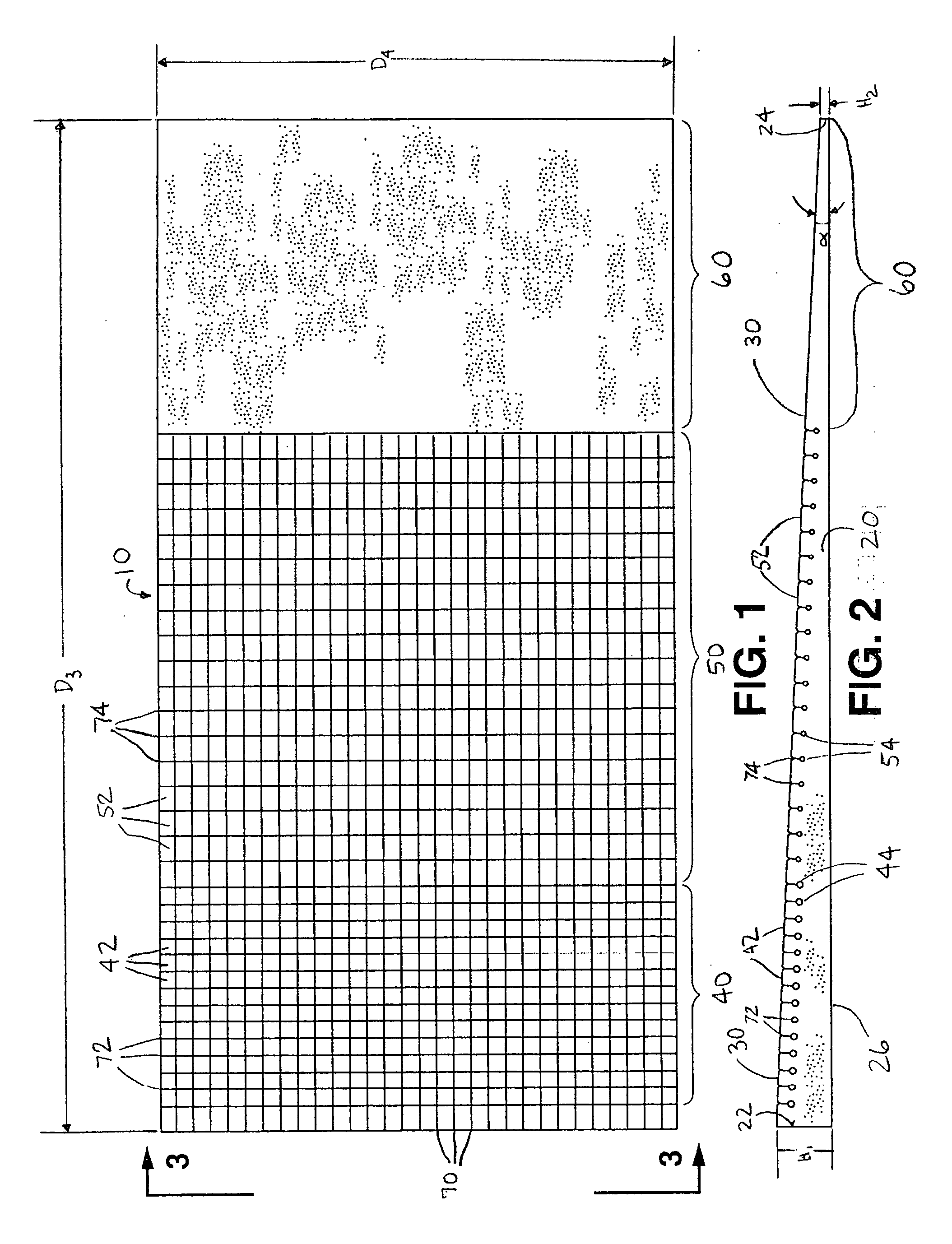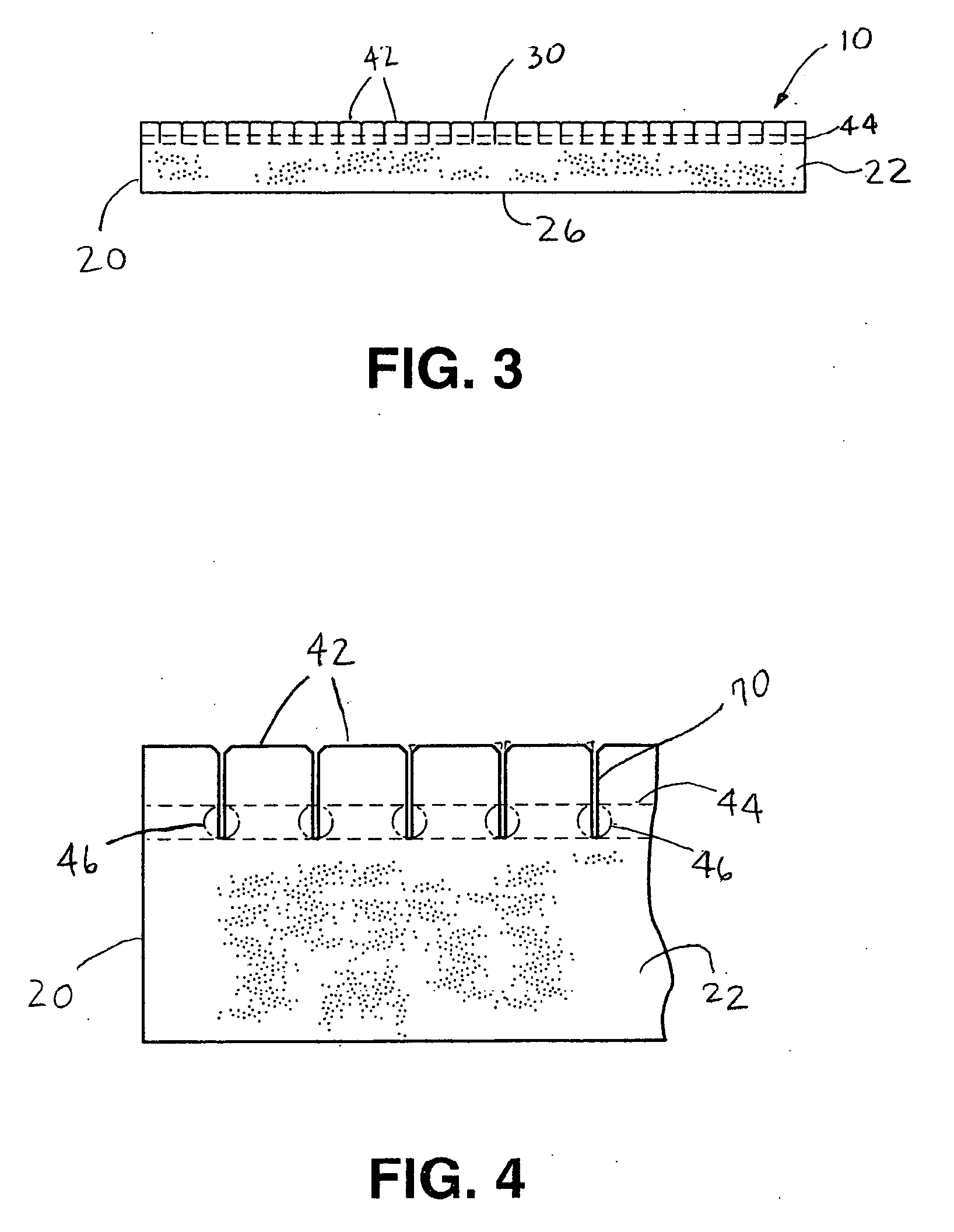Inclined mattress pad
a mattress pad and inclination technology, applied in the direction of beds, couches, sofas, etc., can solve the problems of ulcers, decubitus ulcers, and ulcers that may typically occur, so as to reduce the comfort of users
- Summary
- Abstract
- Description
- Claims
- Application Information
AI Technical Summary
Benefits of technology
Problems solved by technology
Method used
Image
Examples
Embodiment Construction
[0033] Reference will now be made in detail to the presently preferred embodiments of the present matter, one or more examples of which are shown in, or otherwise represented by, the figures. Each example is provided to explain the subject matter, and not as a limitation of the subject matter. In fact, features illustrated or described as part of one embodiment can be used with another embodiment or parts thereof to yield still a further embodiment. It is intended that the present subject matter cover such alternative combinations, modifications and variations.
[0034] The present subject matter is generally directed to inclined pads that can easily convert mattresses having flat or relatively flat surfaces into mattresses providing inclined surfaces on which users may be supported. These inclined pads are constructed by taking into consideration the resilient material used, including the resilient material's thickness, change of thickness (angle of incline), density, and its indenti...
PUM
 Login to View More
Login to View More Abstract
Description
Claims
Application Information
 Login to View More
Login to View More - R&D
- Intellectual Property
- Life Sciences
- Materials
- Tech Scout
- Unparalleled Data Quality
- Higher Quality Content
- 60% Fewer Hallucinations
Browse by: Latest US Patents, China's latest patents, Technical Efficacy Thesaurus, Application Domain, Technology Topic, Popular Technical Reports.
© 2025 PatSnap. All rights reserved.Legal|Privacy policy|Modern Slavery Act Transparency Statement|Sitemap|About US| Contact US: help@patsnap.com



